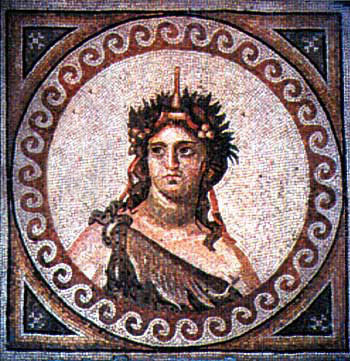CALL. 01.10.2017: Nonnus of Panopolis in Context IV - Ghent (Belgium)
- fasticongressuum

- 2 jul 2017
- 3 Min. de lectura

‘Nonnus in Context’
Once understudied, the fascinating poetry of Nonnus of Panopolis (5th c AD and author of both the last grand epic poem of antiquity and of a hexametric paraphrase of the Gospel of John in the same ‘baroque’ style) has, in the past decades, aroused the interest of many. One of the results of this (re)new(ed) interest in the poetry of the ‘Egyptian Homer’ is the recently appeared Brill’s Companion to Nonnus (2016) – voluminous like Nonnus’ work itself. In the preface, the editor, Domenico Accorinti, adequately describes the ongoing process of Nonnus’ “becoming a classic” and how the current vitality of the scholarly dialogue on Nonnus contributes to that.
One of the signs of this vitality are the ‘Nonnus in Context’ conferences, a series of scientific gatherings initiated by Konstantinus Spanoudakis, who organized the first one in May 2011 (proceedings: ed. Spanoudakis 2014) and after him continued by Herbert Bannert and Nicole Kröll (Vienna 2013) and Filip Doroszewski (Warsaw 2015). Ghent 2018 is the fourth event in what by now is an established series.
FECHA LÍMITE/DEADLINE/SCADENZA: 01/10/2017
FECHA CONGRESO/CONGRESS DATE/DATA CONGRESSO: 19-20-21/04/2018
LUGAR/LOCATION/LUOGO: University of Ghent (Ghent, Belgium)
ORGANIZADOR/ORGANIZER/ORGANIZZATORE: Berenice Verhelst (Ghent) ; Kristoffel Demoen (Ghent) ; Koen De Temmerman (Ghent) ; Fotini Hadjittofi (Lisbon ;, David Hernández de la Fuete (Uned Madrid) ; Johan Leemans (Leuven) ; Anna Lefteratou (Heidelberg) ; Rachele Ricceri (Ghent) ; Tine Scheijnen (Ghent) ; Peter Van Deun (Leuven).
INFO: berenice.verhelst@ugent.be
CALL:
Nonnus of Panopolis in Context IV: Poetry at the Crossroads.
The subtitle for this fourth edition refers to the - indeed multifaceted – metaphor of the ‘crossroads’. From a crossroads you can look forwards, backwards but also sideways. Likewise, when standing at a crossroads, you are visible from all sides. Crossroads, therefore, open many perspectives. This central metaphor is chosen in the first place as an invitation to (further) explore these perspectives along the horizontal and vertical axes of the literary tradition and late antique society. It aims to direct the focus not exclusively on Nonnus, but indeed to highlight the context (not restricted to a specific time-frame, language, genre or art form) in which to interpret his poetry, while also welcoming contributions in which Nonnus’ poetry is only a significant part of the context.
Simultaneously it is also an invitation to reflect on the ways we as modern scholars give shape to the field we are studying. Nonnus is considered a pivotal author, between tradition and innovation, between classical paideia and Christian poetics. The vitality of Nonnus studies in the past decade(s) has not changed Nonnus’ poetry, but has thoroughly influenced the way it is perceived today. If Nonnus is our poet at the crossroads, should we not also keep in mind that we had a hand in constructing the roads?
This conference invites contributions that approach Nonnus’ poetry in/and/or its context from any direction or distance. Suggestions for future road works, new road signs and (other) reflections on the development of our field are most welcome!
>> Practicalities
Paper proposals (for 20 minutes’ presentations in English, French or German) are welcome from anyone interested in the subject. As has been the case for the previous editions, the aim is to create a balanced conference programme with presentations of PhD students, early career researchers and more experienced scholars.
Abstracts (200-300 words) should be sent to berenice.verhelst@ugent.be by 1 October 2017. Please clearly mention your name, current position and affiliation. In early November you will be notified of the acceptance of your paper. Please note that the number of available timeslots is limited. If you have any other questions or if you would like to attend the conference without giving a paper, you can also contactberenice.verhelst@ugent.be.



Comentarios